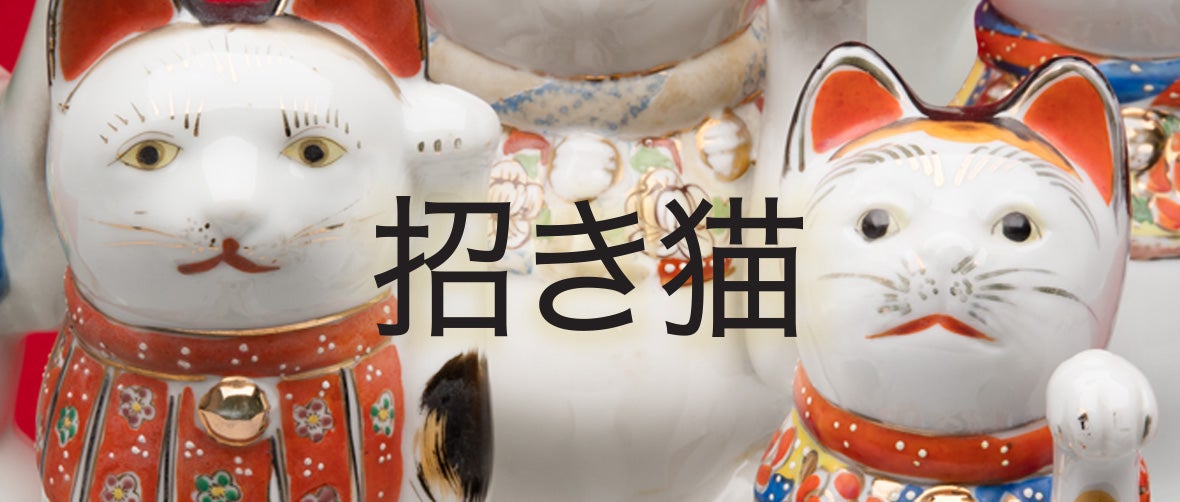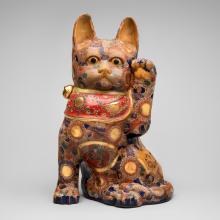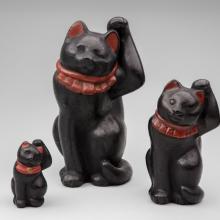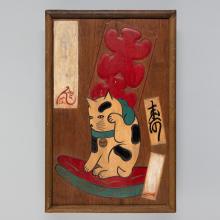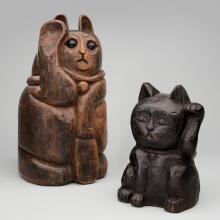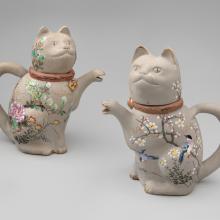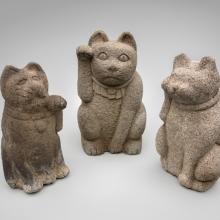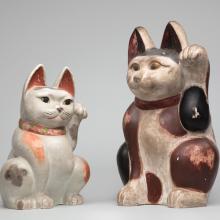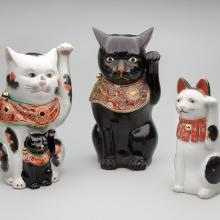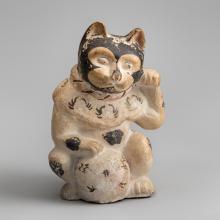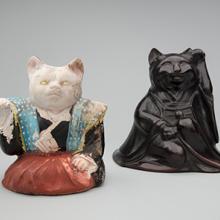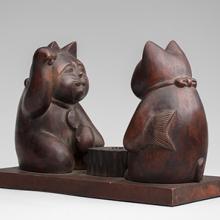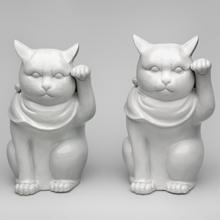Maneki Neko: Japan's Beckoning Cat
Maneki Neko: Japan’s Beckoning Cat
Cats may have arrived in Japan from Korea during the Nara period (710–794). Before long, cats appeared in Japanese literature and art. Over the centuries, the Japanese began keeping the creatures as pets and valuing them for their ability to kill rodents. During the late Edo period (1615–1868), artisans began making maneki neko or beckoning cat figurines, a type of engimono or auspicious object. By the end of the Meiji period (1868–1912), numerous potteries across the country offered maneki neko in ceramic and plaster, including the celebrated Seto and Kutani porcelain kilns. Maneki neko were also made to a lesser extent in copper, bronze, wood, stone, and iron.
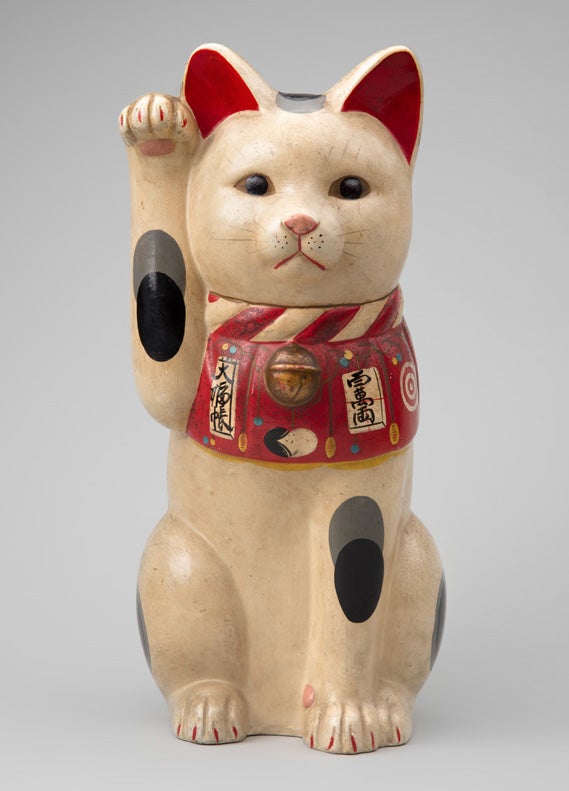 Maneki neko often appear in Japanese and Chinese restaurant windows, where they silently summon potential customers to enter. The cat holds up its left paw in an effort to bring luck and good fortune to a business; it holds up its right paw to invite good fortune, health, and happiness into the home. Colors also have certain connotations: white represents happiness and satisfaction, while black symbolizes safety and helps to drive away evil. Gold maneki neko reference money and fortune. One of the distinctive features of many maneki neko is the bib attached to the neck. Bibs are frequently painted with traditional symbols of good luck and fortune, such as coins. At first glance, maneki neko may all look very similar, but closer inspection reveals the cats vary in color, size, facial features, and bib decoration.
Maneki neko often appear in Japanese and Chinese restaurant windows, where they silently summon potential customers to enter. The cat holds up its left paw in an effort to bring luck and good fortune to a business; it holds up its right paw to invite good fortune, health, and happiness into the home. Colors also have certain connotations: white represents happiness and satisfaction, while black symbolizes safety and helps to drive away evil. Gold maneki neko reference money and fortune. One of the distinctive features of many maneki neko is the bib attached to the neck. Bibs are frequently painted with traditional symbols of good luck and fortune, such as coins. At first glance, maneki neko may all look very similar, but closer inspection reveals the cats vary in color, size, facial features, and bib decoration.
Located along the banks of the Imado river, the Imado kilns of Edo, now called Tokyo, developed the first maneki neko. The kiln site, largely known for producing utilitarian stoneware, crafted simple, low-fired, clay maneki neko sometime in the mid-nineteenth century. By the end of the century, the folk style had spread across the country. A number of potteries contributed unique design variations to this new form of engimono; others imitated the styles made popular by various kilns. During the Taisho period (1912–26), the historic Seto kilns began crafting elaborate maneki neko modeled after Japanese bobtail cats with highly decorative bibs. Located in central Japan, Tokoname kilns, one of Japan’s oldest pottery centers, began making maneki neko in the mid-twentieth century. Tokoname now produces more maneki neko than anywhere else in the country. These plump beckoning cats carry large gold coins in their lowered paws.
During the Meiji period (1868–1912), Japanese manufacturers began to export maneki neko. In fact, these symbols of good fortune are so frequently found in Chinese restaurants and shops that many are surprised to learn they have Japanese origins. This exhibition features a variety of traditional maneki neko from Japan’s many kilns.
This exhibition was made possible by a generous loan from Mingei International Museum.
Special thank you to Mingei International Museum for all of their assistance.
©2018 by the San Francisco Airport Commission. All rights reserved.
